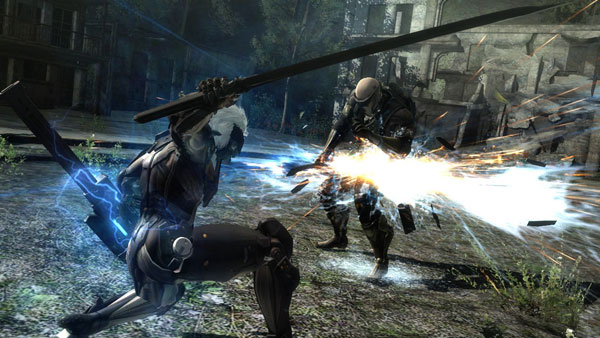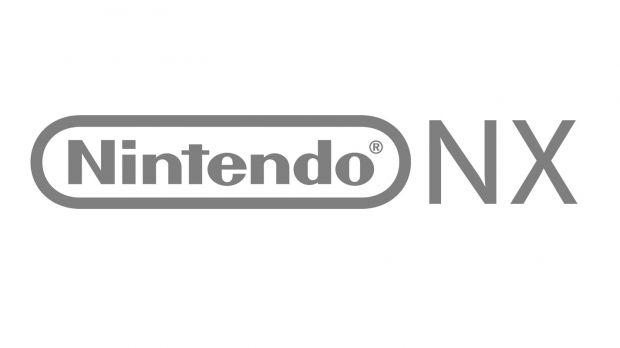
The Nintendo NX is a scary proposition. I’m not necessarily saying it’s a bad proposition. But going by Eurogamer’s comprehensive leak last month, the NX will have major ramifications for the industry whether or not it succeeds. With ever-shrinking transistor size and increased high bandwidth access to the cloud, the gaps between mobile and PC, mobile and console have been shrinking. Convergence is inevitable and the rise in popularity of 2-in-ones, touchscreen laptops, and tablets points precisely in that direction. The consoles this gen have mobile DNA by way of their low-power, low profile Jaguar processor cores, repurposed from AMD’s value-oriented APU line originally meant for netbooks, tablets, and entry-level laptops. As we look forward to 10nm process node and beyond, increased transistor density means that the mobile devices of tomorrow will offer better performance than the consoles of today.
At the same time, near-universal high-bandwidth internet connectivity will have a whole different set of implications: given enough readily-accessible bandwidth, streaming services like Nvidia’s GRID and the now-defunct Onlive could eliminate the need raw performance in local systems altogether. A cloud-based gaming ecosystem could power next-gen experiences on your phone, tablet, laptop, and TV. With all these developments in mind, console-mobile-PC convergence is a question of if, not when. But is it meant to be right now with the Nintendo NX? The NX is reportedly powered by a Tegra X1 mobile SoC, the same chip at the heart of the Google Pixel C and Nvidia’s Shield TV microconsole. How well will the X1 perform, particularly compared to the consoles? Performance in Tegra X1 exclusives on Android is a good place to start.
Metal Gear Rising: Revengeance is one of the most high-profile AAA ports for the Tegra X1-based Nvidia Shield TV. Per Digital Foundry’s analysis, the Shield TV offers up a visual experience that’s on par with the PS3 and Xbox 360 in Revengeance, but at a much lower framerate. On the other hand, Doom 3: BFG Edition on the Shield featured a slick 1080p/60 FPS presentation, a meaningfully better experience than on the last-gen consoles. It’s important to take these Android results with a pinch of salt. Android games incur significant driver overhead thanks to OpenGL. With the NX, developers will be able to code closer to the metal and make platform-specific optimizations just as with any console.
With that in mind perhaps the Shield TV comparison doesn’t quite do justice for the X1 or the NX. A more appropriate comparison would be with the GM108-based GT 920MX. Haven’t heard of the 920MX? We don’t blame you: It’s a bottom-of-the-barrel Maxwell offering aimed at entry-level laptop buyers who want a little more graphics oomph than what an iGPU can offer. But the 920MX is a crucial part of the puzzle because it’s a dead-ringer for the Tegra X1’s GPU component: with 256 CUDA cores and a narrow, 64-bit memory interface address paired with DDR3 VRAM, presumably at 1800 MHz, it matches the X1’s GPU spec-for-spec. (For the sake of accuracy, we’ll add that the Tegra X1 uses LPDDR4, though this has a similar data rate to plain ol’ DDR3). Memory bandwidth on the 920MX, in the vicinity of 34 GB/s is slightly higher than the X1, which is at 25 GB/s, but apart from this the two are a near-perfect match.
The 920MX is a low-profile part. So low-profile that Nvidia didn’t even bother announcing it to the press: It just quietly made the part available to OEMs a few months ago. The 920MX has turned up in a couple laptops you’ve never heard of like the Asus X302UV-FN016T. Luckily for us, the incredibly thorough folks over at Notebookcheck have put the X302UV-FN016T through their standard gaming benchmark suite.
Interestingly, the Asus laptop features a ULV (Ultra-low voltage) Core i5 6200u, a dual-core part that’s slightly faster than the X1’s Cortex-A57 CPU component. Phoronix benched a Shield TV running Ubuntu and found it to largely keep pace with ULV i3s. The takeaway from this is that even in terms of potential CPU bottlenecking, the Tegra X1 in the NX should offer gaming performance that’s broadly comparable to the Asus laptop. Going by Notebookcheck’s benchmark figures, the 920MX is just shy of a 30-FPS update in many current-gen games at 720p, while last-gen titles were comfortably above the mark. On a personal note, the 920MX’s performance figures are broadly similar to what I managed on my Lenovo Y500 laptop, with the 750M. For the record, the 750M hands in exceptional 720p performance in last-gen titles, and can just about get by in in cross-gen titles like Watch Dogs.
With the NX’s mobile component having a much smaller screen, a 720p display isn’t out of the question–the PS Vita, for instance, features a qHD (960×540) panel. With a good deal of platform-specific optimization, we wouldn’t be surprised to see NX ports of at least some current-gen titles and this is seemingly in line with earlier statements by Ubisoft that a projected a positive outlook for third-party content.
Comparing the NX to the PlayStation 4 and Xbox One is not as straightforward as you’d think. Again, the lesser amount of GPU power on tap means that NX games will likely target a 720p output, not 1080p. But how exactly would the X1 fare, GPU-wise compared to the consoles? Numerous benchmark features (including my own) indicate that GM107 parts like the 960M and 750 Ti perform near-identically to the PlayStation 4 when paired with a low-profile CPU like an i3-4130. Comparing GM107 to GM108 (what the 920MX is based on), we find that GM108/X1 features 40 percent as many shaders (256 compared to 640), and substantially lower memory bandwidth (25 GB/s compared to 86 GB/s). The low memory bandwidth would impact resolution scaling on the NX, again pointing towards 720p being a likely resolution target for many NX titles. Essentially, an X1-powered NX would be a little under half as fast as the PlayStation 4 under non bandwidth-intensive and non compute-bound workloads. This isn’t a bad position at all for a primarily mobile console to be in.
A somewhat unlikely, yet tantalizing possibility is that the NX will use Nvidia’s Parker SoC (which everyone seems to be calling “X2” all of a sudden.) Parker itself is Nvidia’s codename for their next-gen Pascal-based Tegra part. Nomenclature aside, Parker is already here, strictly speaking. A couple months ago, Nvidia showcased a prototype of the PX-2 system for self-driving cars. The PX-2 used an unnamed Pascal-based Tegra SoC, presumably Parker. Parker potentially offers double the graphics performance of the Tegra X1, meaning actual parity with the PS4 and Xbox One. Sadly, going by Nintendo’s historical preference for mature, cheap parts, Parker isn’t likely to feature in the NX, least of all with the NX expected to hit an unexpectedly low retail price point.
While we’re speculating, though, here’s another curveball: game streaming. As we mentioned earlier, cloud streaming is on the uptick: Sony’s PlayStation Now offers a selection of over 400 PS3 games, and Nvidia’s Geforce Now, powered by their GRID servers, offers a wide range of AAA PC titles. The Xbox One will be using Microsoft’s Azure cloud platform to offload physics calculations in Crackdown 3. With bandwidth getting cheaper by the day, a thin-client streaming service could effectively bypass all of the NX’s technical shortcomings. We don’t believe that Nintendo necessarily partnered with Nvidia on the NX with game streaming in mind. We don’t think it’s necessarily going to be feature available on launch-day. But nevertheless, three, four years down the line when the NX competes with the successor to the Xbox Scorpio, a premium streaming service offering games that the NX could never run locally, possibly leveraging Nvidia’s GRID infrastructure, could keep Nintendo’s gambit relevant for years to come.
With all this in mind, I still feel that the NX is a tough sell. The biggest risk is that, by the time it comes out, the NX would be irrelevant both as a console and as a handheld. Smartphones are getting more powerful by the day, and with release of the Vulkan API on Android (and, of course, Metal on iOS), a much larger chunk of their performance can be utilised in tomorrow’s games. Smartphone gaming is no small niche: King, the developers of Candy Crush, apparently contributed 20 percent of Finland’s capital tax revenue last year. That’s kinda scary to be honest. On the other hand, though, consoles appear to be doing better than ever, with the PlayStation 4 setting a record-breaking sales growth pace. What will the market be like next year when the NX is set to launch? Will anyone be willing to buy a console/handheld hybrid when they already have one of each? Only time can tell.

















